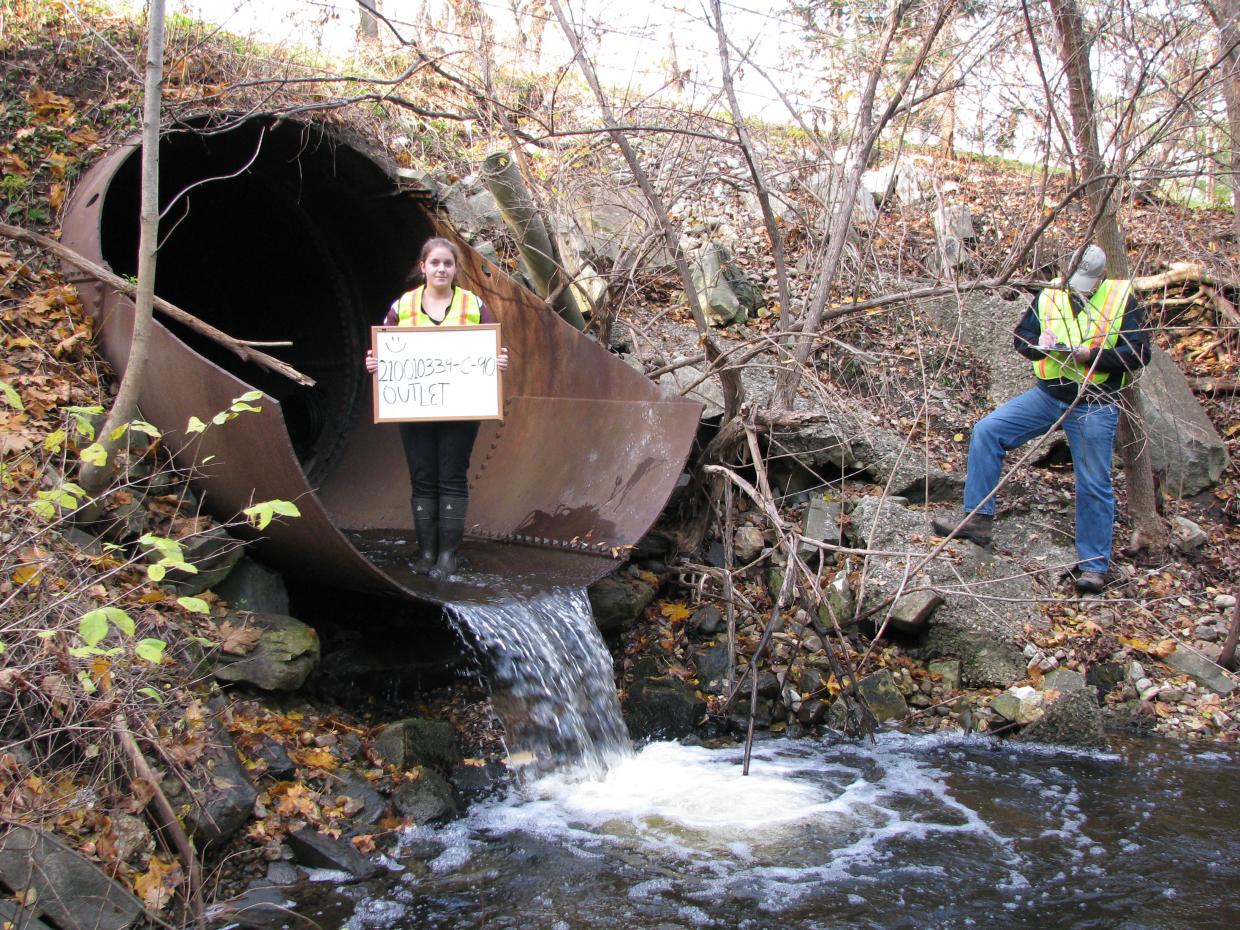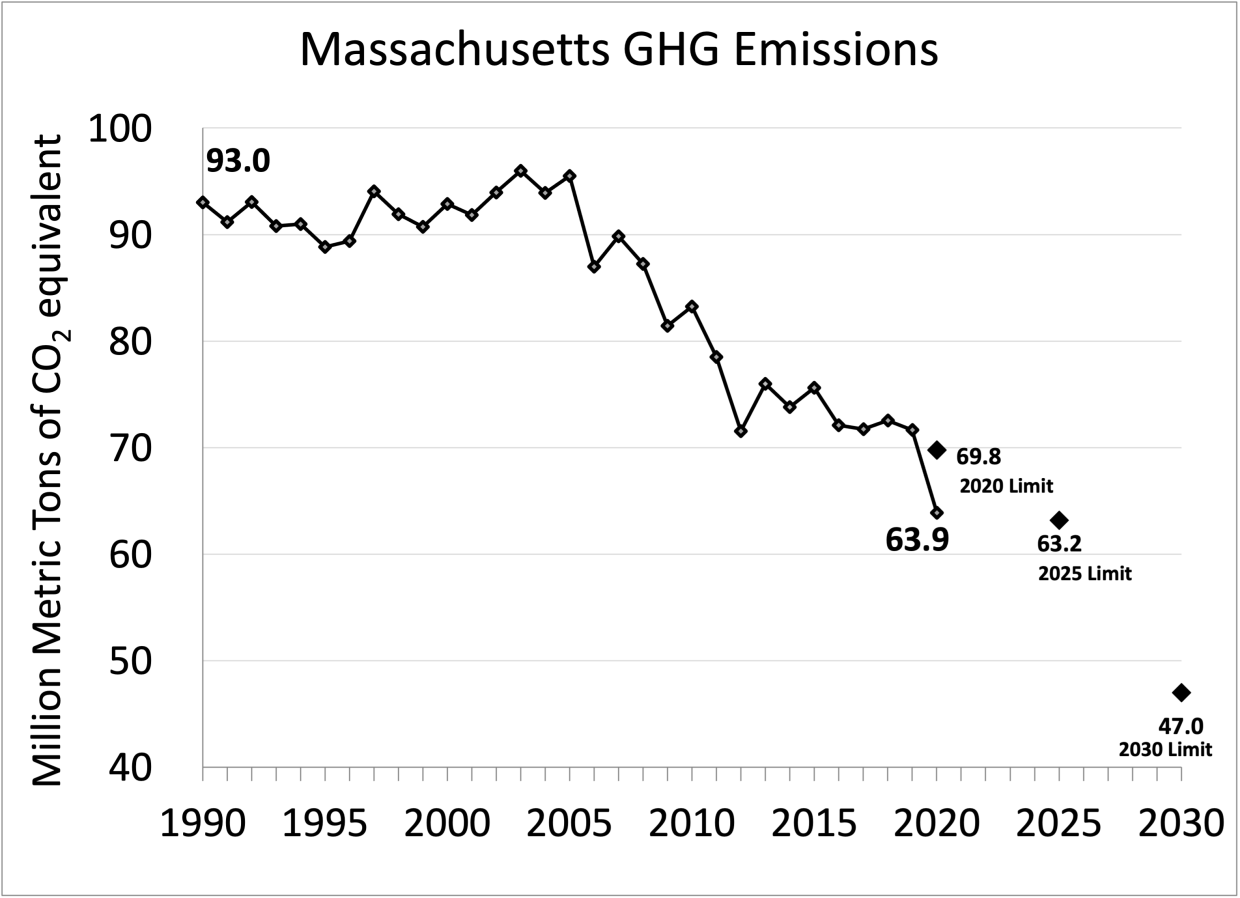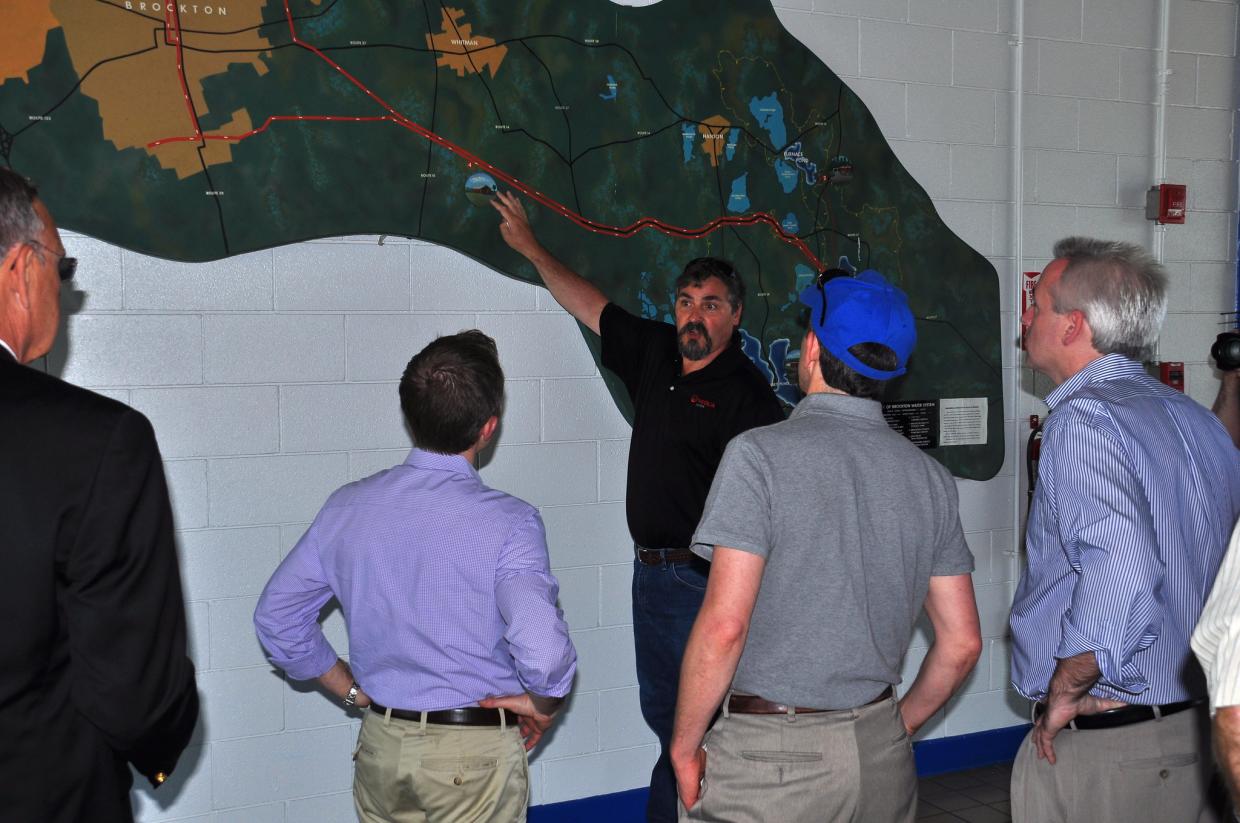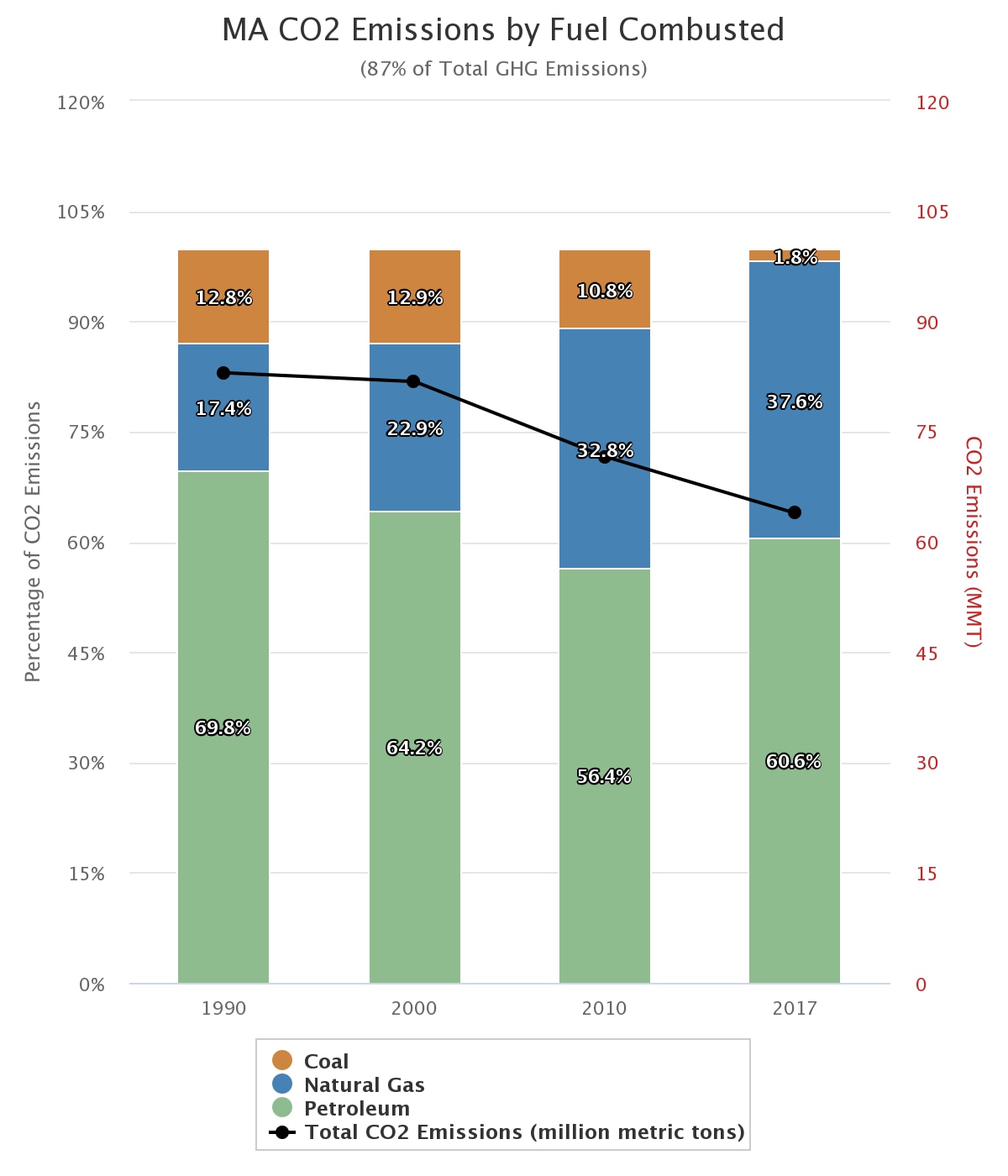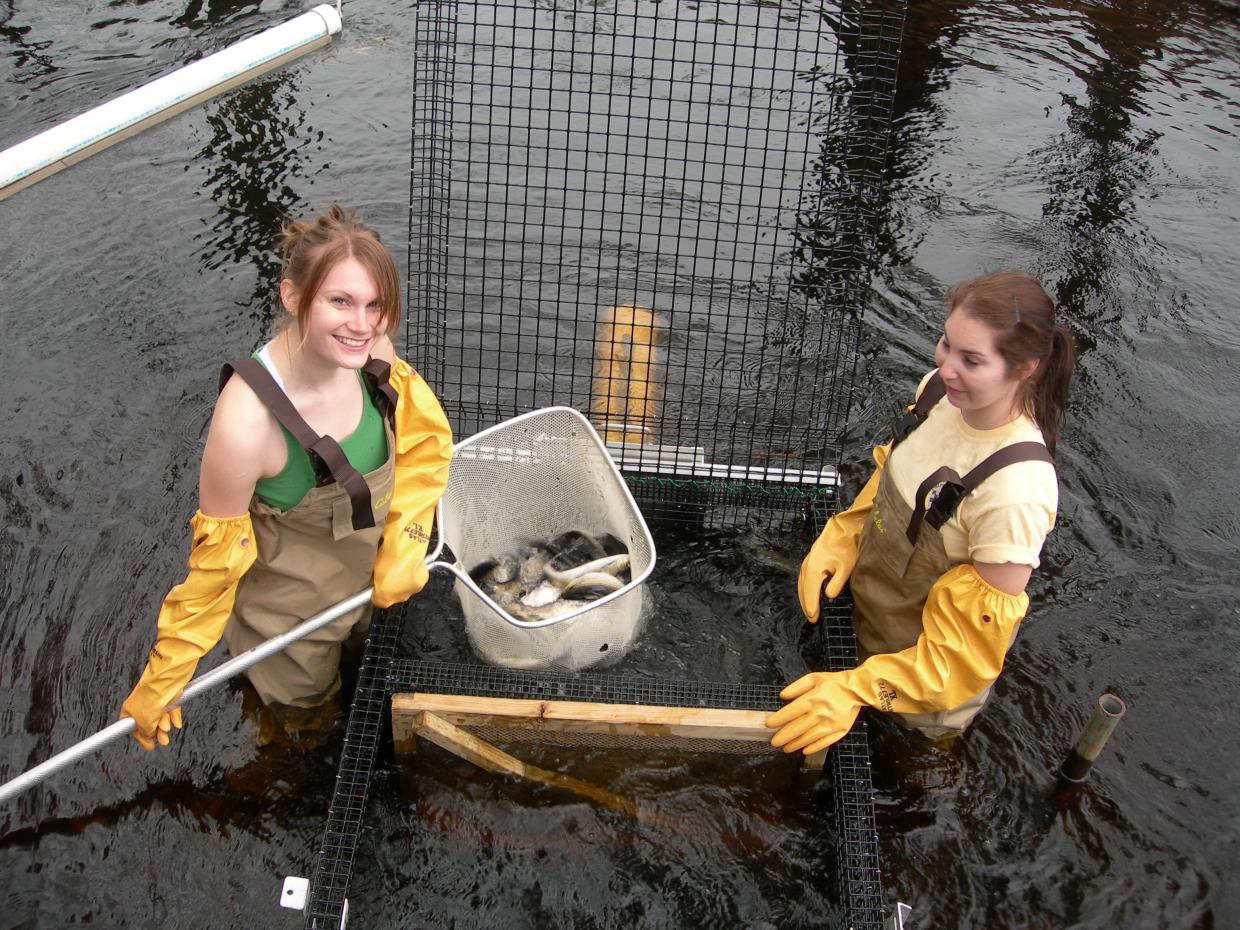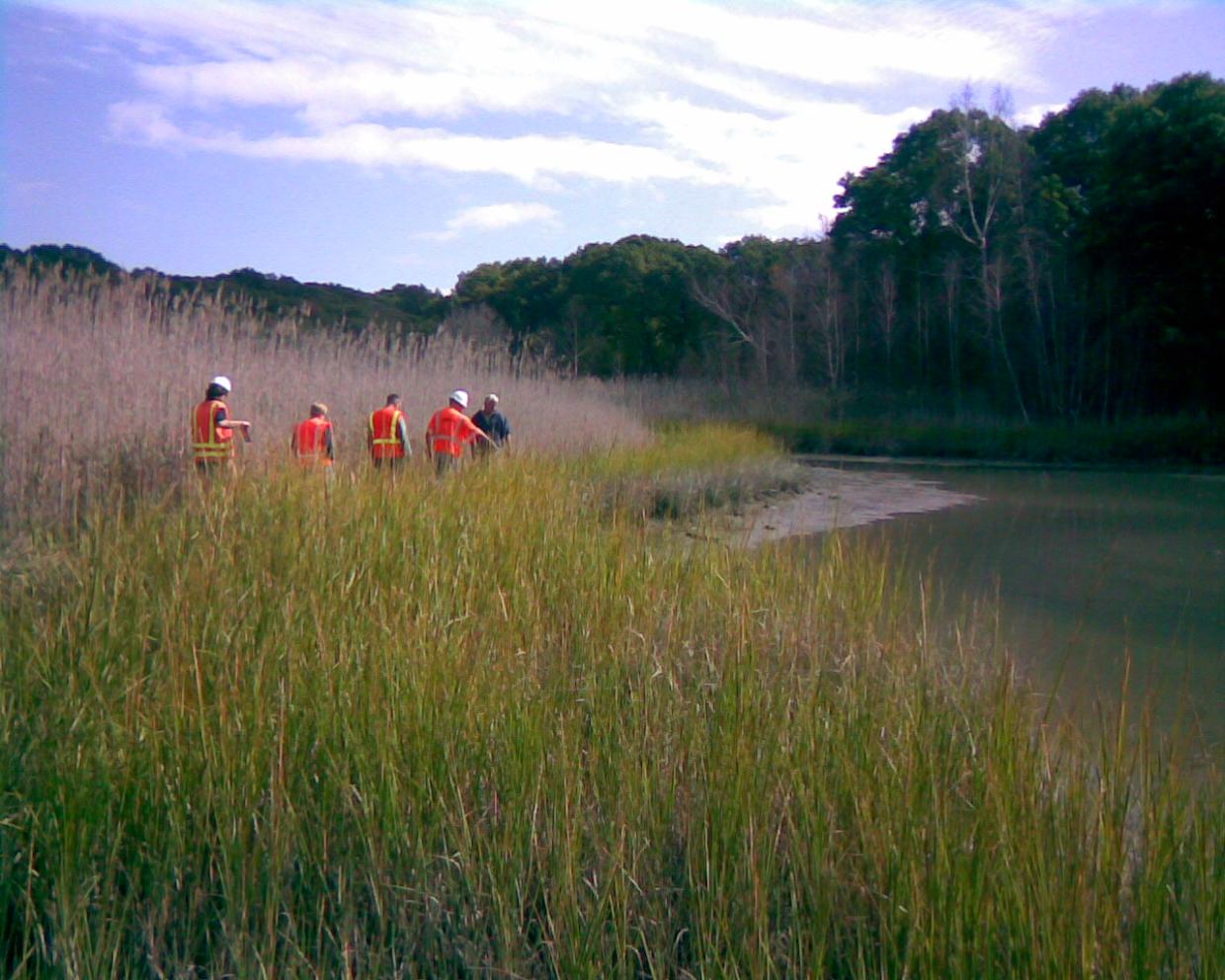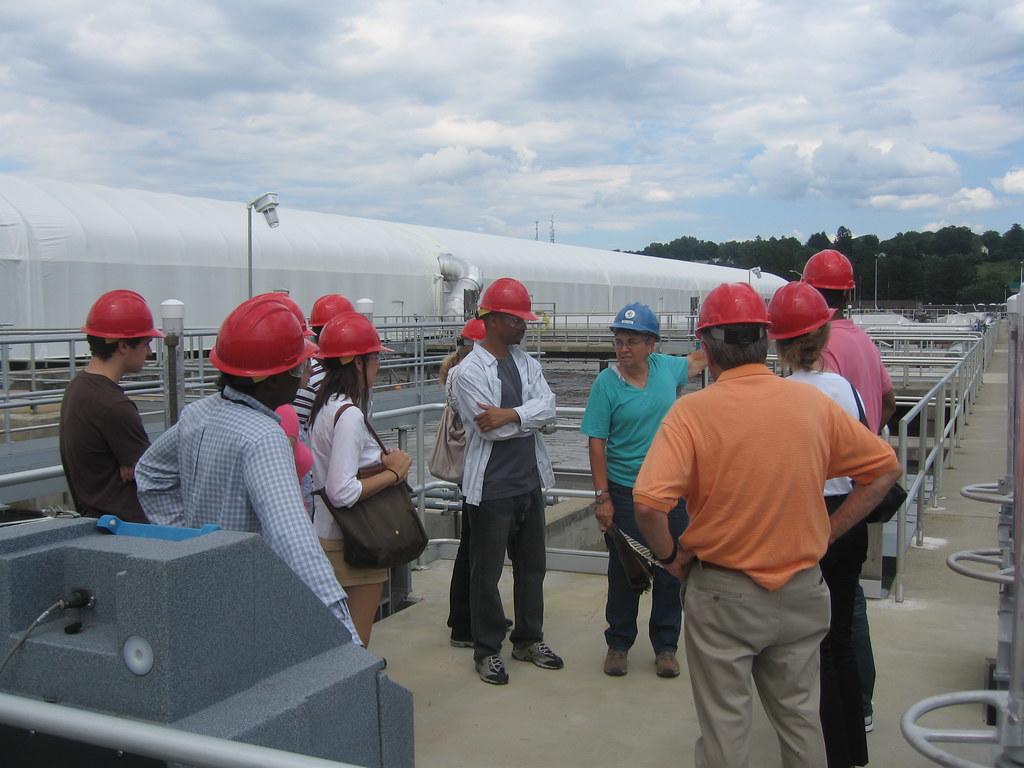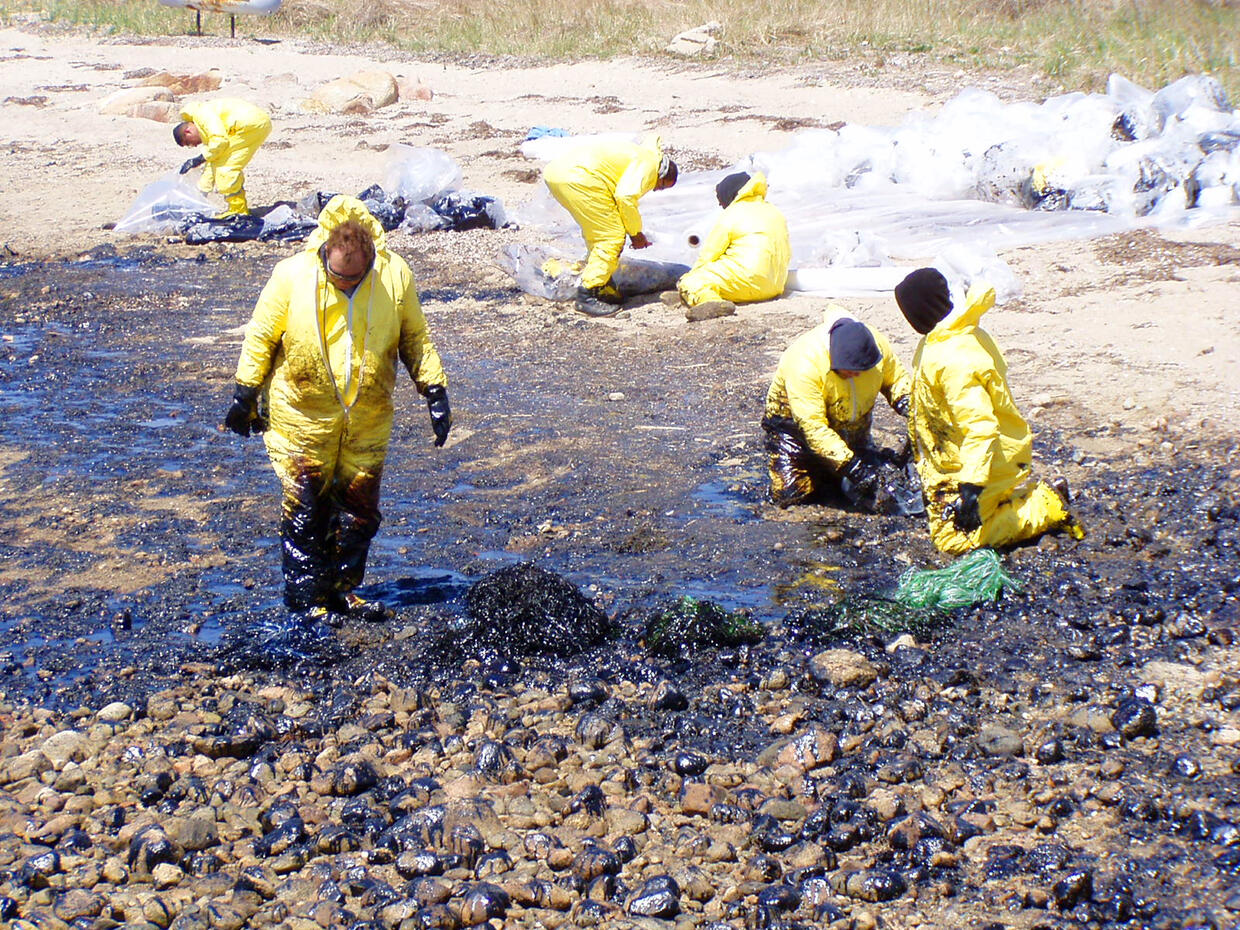Emission limits
The Commonwealth is working to meet a goal of net zero emissions from the 1990 baseline by the year 2050 as required by the 2050 CECP
MassDEP is working to mitigate emissions of greenhouse gases in Massachusetts through a number of programs in a variety of regulated sectors. Mitigation efforts in the commonwealth were advanced with the enactment of the Global Warming Solutions Act in 2008 that set emission reduction goals for the entire state. MassDEP implements important components of that Act and administers other regulatory and assistance programs to achieve emission reductions.
Global Warming Solutions Act (GWSA) Implementation
Greenhouse Gas Emission Limits The GWSA requires MassDEP to establish annual declining limits for GHG emissions in order to meet a goal of reducing emissions in Massachusetts to 25% below a baseline of 1990 emissions by the year 2020. MassDEP has established regulations that address a number of emission source categories since the GWSA was enacted in 2008, and monitors overall progress in meeting the emission limits of the GWSA. The agency is also working to meet a net-zero emissions target by the year 2050.
Reporting Greenhouse gas emissions The GWSA requires that all facilities emitting more than 5,000 short tons of CO2 equivalent per year report their emissions to MassDEP. Detailed reporting requirements are established in MassDEP implementing regulations. Retail sellers of electricity are also required to report emissions from generating the electricity that they sell to consumers in Massachusetts.
The Climate Roadmap Law and Clean Energy and Climate Plan
In 2021 An Act Creating A Next-Generation Roadmap for Massachusetts Climate Policy (Climate Roadmap law) was enacted which requires the EEA Secretary to set statewide emissions limit and sector-specific sub-limits every 5 years. More specifically, the 2030 emissions limit must be at least 50% below the 1990 baseline, the 2040 emissions limit must be at least 75% below the 1990 level, and a 2050 emissions limit must be set to achieve net zero statewide greenhouse gas emissions (and emissions no greater than 85% of 1990 levels). It also set a deadline of January 1, 2023 for the adoption of the 2050 emissions limits and sublimits, as well as the release of a comprehensive plan to achieve those limits. EEA released the Clean Energy and Climate Plan for 2050 (2050 CECP) on December 21, 2022 in compliance with the new law.
The climate roadmap law also directed MassDEP to develop and administer new programs, described below.
Cumulative Impact Analysis in Air Permitting
The climate roadmap law (Section 102C of Chapter 8 of the Acts of 2021) requires MassDEP to evaluate and seek public comment on incorporating cumulative impact analyses (CIA) into certain permits, and to propose regulations within 18 months requiring cumulative impact analysis for certain categories of air quality permits. In 2021 and 2022 MassDEP sought input on different approaches to CIA and provided information on the air permitting process; environmental, health, and socioeconomic indicators that could be part of CIA; and a draft CIA framework. At the end of 2022 MassDEP filed proposed regulations to require CIA analysis for comprehensive plan approval applications for new and modified facilities that would increase emissions in or near environmental justice (EJ) populations. The proposed CIA requirements include enhanced outreach to and involvement of EJ populations, assessment of existing community conditions, and analysis of cumulative impacts. MassDEP is working to promulgate final CIA regulations in 2023.
Clean Heat Standard
The 2025/2030 Massachusetts Clean Energy and Climate Plan (CECP) tasks MassDEP with implementing a "cap on emissions from heating." MassDEP is to "initiate a stakeholder process in 2022" with a goal of finalizing regulations in 2023 and implementing the requirements as early as 2024. A "Clean Heat Standard" (CHS) is referenced in the CECP as a potential option for capping heating emissions. The Commission on Clean Heat, appointed to study options for reducing heating emissions, issued its final report on November 30, 2022. One of its recommendations was to direct MassDEP to develop a CHS, stating the agency should begin a regulatory process by spring 2023 and implement a CHS by 2024 or as soon as feasible.
Electric & Low Emission Vehicles
In July 2022, Massachusetts along with California, Colorado, Connecticut, Hawaii, Maine, Maryland, Nevada, New Jersey, New York, North Carolina, Oregon, Pennsylvania, Rhode Island, Vermont, Virginia, Washington, District of Columbia, and Quebec released the Multi-State Medium- and Heavy-duty Zero-Emission Vehicle (ZEV) Action Plan. The Action Plan:
- Describes the need to ensure a just and equitable transition to zero-emission medium- and heavy-duty (MHD) vehicles to protect public health, especially in overburdened communities;
- Provides an overview of the developing MHD ZEV market with a focus on electrification of transit buses, school buses, and commercial fleets;
- Recommends strategies for state policymakers to support the equitable and widespread development of MHD ZEVs, including sales and fleet purchase requirements and vehicle and infrastructure purchase incentives.
In June 2018, Massachusetts along with the states of California, Connecticut, Maryland, New Jersey, New York, Oregon, Rhode Island, and Vermont released an updated Multi-State Zero-Emission Vehicle (ZEV) Action Plan, reaffirming their commitment to work together on initiatives that:
- Increase consumer awareness of, and confidence in, ZEVs;
- Make ZEVs more affordable and provide incentives for buying them;
- Support the development of charging and hydrogen fueling infrastructure to keep ZEVs running;
- Promote electrification of public and private light-duty fleets; and
- Support dealerships and dealership associations to grow consumer awareness of ZEVs.
Clean Energy Results Program
Renewable energy and energy efficiency can provide tremendous benefits to air quality and climate protection. They help reduce harmful air emissions, including Greenhouse Gas emissions, associated with the burning of fossil fuel. MassDEP's Clean Energy Results Program strengthens the environment-energy connection by supporting MassDEP and Department of Energy Resources (DOER) efforts to reduce regulatory barriers, smooth permitting pathways, and advance clean energy and energy efficiency improvements across the state.
The Gap Energy Grant program, part of the Clean Energy Results Program, is a streamlined funding model that has helped municipal water utilitiesreduce their energy usage and operating costs, become more resilient, and improve the environment. In early 2023, an expanded Gap program provided $8.1 million in a third round of funding that is now reaching deeper into more communities. A total of 62 organizations, including: (40) municipal drinking water and wastewater facilities, (12) non-profit multi-family affordable housing organizations, (7) agricultural and food-producing non-profits and (3) small businesses engaged in food distribution and processing are implementing energy efficiency and renewable energy technologies. These cost-effective projects are anticipated to save these organizations up to $1,642,963 in annual energy cost savings, more than 9,000 megawatt hours (MWh) in annual electricity savings or onsite generation of clean energy and reduce carbon emissions by approximately 3,359 metric tons annually.
Organics Diversion and Anaerobic Digestion
Organics (food waste and other organic materials) when disposed of in a landfill generate methane, a potent greenhouse gas. The Commonwealth is aggressively seeking to divert this organic material away from landfills to food donation, animal feed, composting and anaerobic digestion. As of November 2022, businesses generating over 1/2 ton a week or more of organics can no longer send that material for disposal. Grants and technical assistance to organics waste generators, collectors, processors and end users enables these entities to establish cost efficient and effective programs.
Anaerobic digestion (AD) facilities provide a number of benefits, including diversion of organic material from landfill disposal; generation of clean, renewable energy; reduction of greenhouse gases; reduction in costs for management of organics and/or sludge or manure; and generation of revenue. The Commonwealth has taken a number of actions to promote AD, both to manage farm wastes and to manage wastewater treatment plant (WWTP) residuals, in addition to food waste. MassDEP has worked closely with DOER and the Mass Clean Energy Center on these efforts. Those actions include:
- Regulations specific to AD facilities to provide a clear permitting pathway
- Incentives such as the Renewable Portfolio Standard (RPS)
- Grant and loan opportunities
- Organics waste ban and guidance updated to reflect the goals of the Solid Waste Master Plan and 2022 regulatory amendments.
Greener Cleanups
The application and use of green and sustainable approaches for site assessment and remediation help to eliminate or reduce the overall net environmental footprint of cleanup activities to the maximum extent possible. Green and sustainable remediation addresses five core elements or factors for reducing the environmental footprint of a cleanup including:
- Minimizing total energy use while maximizing the use of renewable energy;
- Minimizing emissions of greenhouse gases and other air pollutants;
- Minimizing water use and impacts to water resources;
- Reducing, reusing and recycling materials and waste; and
- Avoiding or reducing adverse impacts to ecosystems and land resources.
Environmental Justice And Climate Resiliency
The impacts of climate change will affect the most vulnerable populations in Massachusetts which in many cases are communities designated as EJ populations. MassDEP is using an environmental justice lens to focus resources on sectors of our populations that are most vulnerable with limited recovery capacity due to low income, limited English proficiency, or high numbers of minority residents. MassDEP also commits to provide access to information and provide services to meet the needs of the vulnerable populations that stem from social factors that can be amplified when impacts from climate change disrupt/impact the lives of those residing in geographically vulnerable areas.
